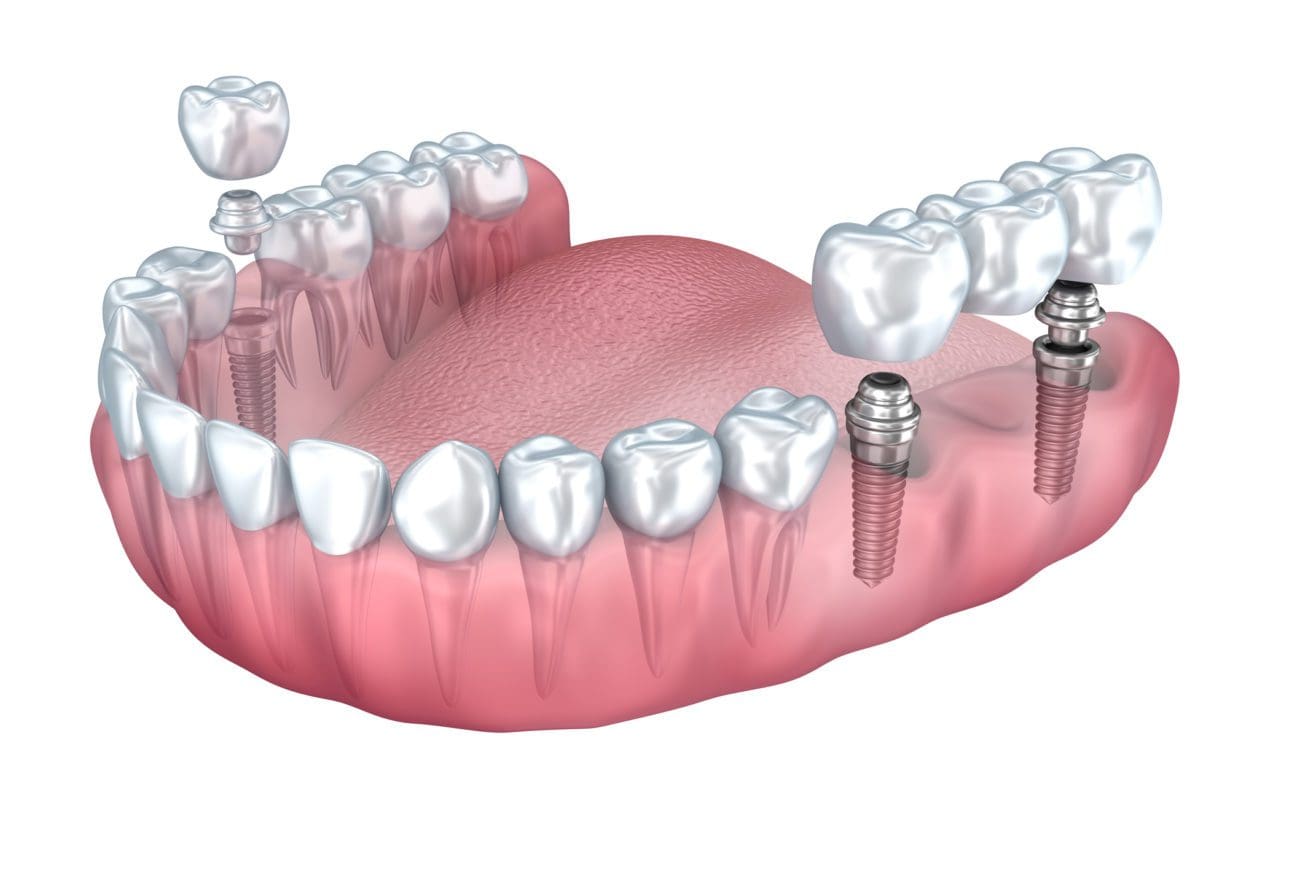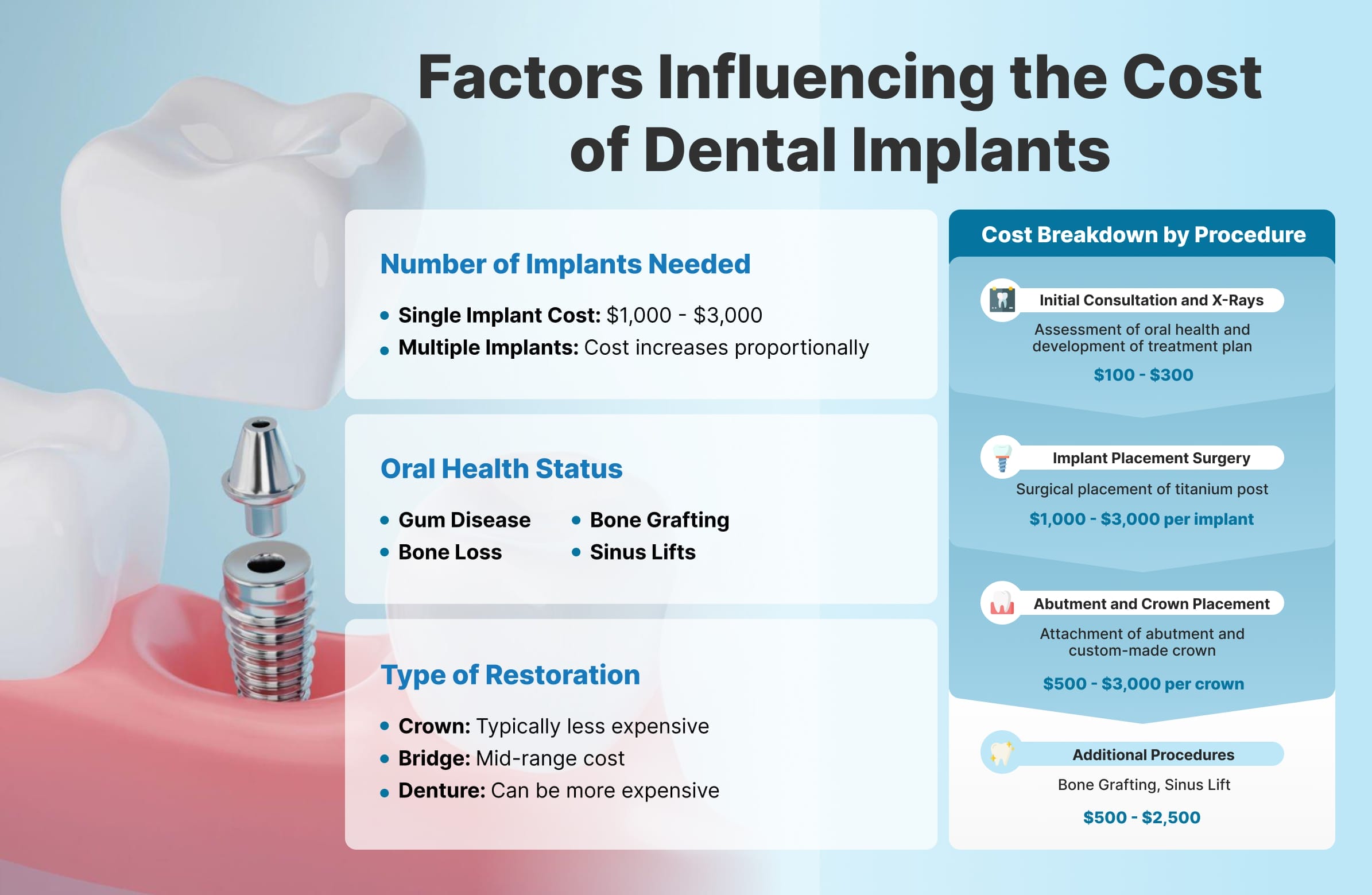7 Simple Techniques For Dental Sense
The Definitive Guide to Dental Sense
Table of ContentsDental Sense Fundamentals ExplainedThe Greatest Guide To Dental SenseThings about Dental SenseDental Sense - Questions
are medical tools operatively implanted into the jaw to restore a person's capability to eat or their look. They provide support for synthetic (fake) teeth, such as crowns, bridges, or dentures. When a tooth is shed because of injury or illness, a person can experience issues such as rapid bone loss, defective speech, or changes to chewing patterns that result in pain.Oral dental implant systems contain an oral implant body and oral implant abutment and might also consist of an abutment addiction screw. Root canal procedure. The dental implant body is surgically placed in the jawbone instead of the tooth's origin. The dental implant joint is typically attached to the implant body by the abutment fixation screw and prolongs with periodontals right into the mouth to sustain the affixed artificial teeth
(https://myspace.com/dentalsense1)Framework of The Oral Implant System selecting oral implants, talk with your dental company regarding the prospective advantages and risks, and whether you are a prospect for the procedure. Points to think about: Your total health and wellness is an essential consider identifying whether you are a great prospect for dental implants, how much time it will take to recover, and how much time the implant might remain in location.
Smoking cigarettes might impact the healing procedure and decrease the long-term success of the dental implant. The recovery procedure for the implant body may take numerous months or longer, during which time you normally have a short-lived abutment instead of the tooth. the oral implant treatment: Carefully comply with the oral health directions offered to you by your oral copyright.
The Ultimate Guide To Dental Sense
Implant failing can result in the demand for another procedure to repair or replace the implant system. Recovers the capability to chew Brings back cosmetic look Helps keep the jawbone from reducing because of bone loss Preserves the health of the surrounding bone and gum tissues Aids maintain adjacent (neighboring) teeth secure Enhances lifestyle Damages to bordering all-natural teeth during implant positioning Injury to the surrounding tissues during surgical procedure, such as sinus opening Injury during surgery (as an example, crack of surrounding jawbone) Poor feature, such as really feeling like the teeth do not bite together usually A sensation that the tooth hangs or turning in area resulting from a joint screw loosening Implant body failing (looseness of the dental implant body) as a result of systemic infection, which may be more most likely in clients with uncontrolled diabetics issues as a result of local infection in bone and gum tissues sustaining the implant body as a result of delayed healing, which might be more probable in individuals that smoke Problem cleaning the periodontals around the dental implant, leading to poor oral health Without treatment gum disease Post-surgical numbness as a result of nerve impingement or damage Always alert wellness care carriers and imaging specialists that you have dental implants before any kind of magnetic vibration imaging (MRI) or x-ray procedures.
FDA is not conscious of any type of damaging events reported for MRI or x-ray treatments with oral implants. Oral implants systems are commonly made from products that comply with global agreement standards of the International Organization for Standardization (ISO) or ASTM International. These requirements have details of what makes a secure product.

A dental implant is a structure that replaces a missing tooth. With screw-like tools, the cosmetic surgeon inserts a dental implant into the jawbone, and it serves as an anchor for an artificial tooth, called a crown. A tool called a joint links the artificial tooth to the dental implant. The crown is custom-made to fit the person's mouth and match the color of their teeth.
Dental Sense Things To Know Before You Get This
Some people are not eligible for oral find out this here implant surgical procedure. It is for oral doctors to operate people with: acute illnessuncontrollable metabolic diseasebone or soft tissue illness or infectionIf these problems are resolved, a person can have the surgical treatment. In, dental doctors avoid operating individuals with: If people with any of the above go through dental implant surgical procedure, there is a greater threat of the implant falling short.

Oral implant surgical procedure is a customized process. Offer you time to recover. Affix the blog post and last crown, bridge or denture.
Next off, your doctor will very carefully position the oral implant into your jaw. Ultimately, your specialist will rearrange your gum tissues and close the laceration with stitches. If your implant is near the front of your mouth, your dental practitioner will make a short-term tooth for you to wear up until you heal. This way, you will not have a space in your smile while you recoup.
The Of Dental Sense
Your service provider can tell you what to anticipate in your scenario. During the healing stage, your jawbone must fuse to the oral implant. This procedure, called osseointegration, is crucial for stability and long-lasting success. This process can take anywhere from 3 to nine months. In some cases, it might take longer.
As soon as your dental implant heals, your dental practitioner can affix the joint (small connector post) and your final restoration (crown, bridge or denture). This usually takes regarding one hour to complete and might call for a second minor surgical procedure. You shouldn't feel any kind of pain during your dental implant procedure because your supplier will certainly use drug to numb your gum tissues.